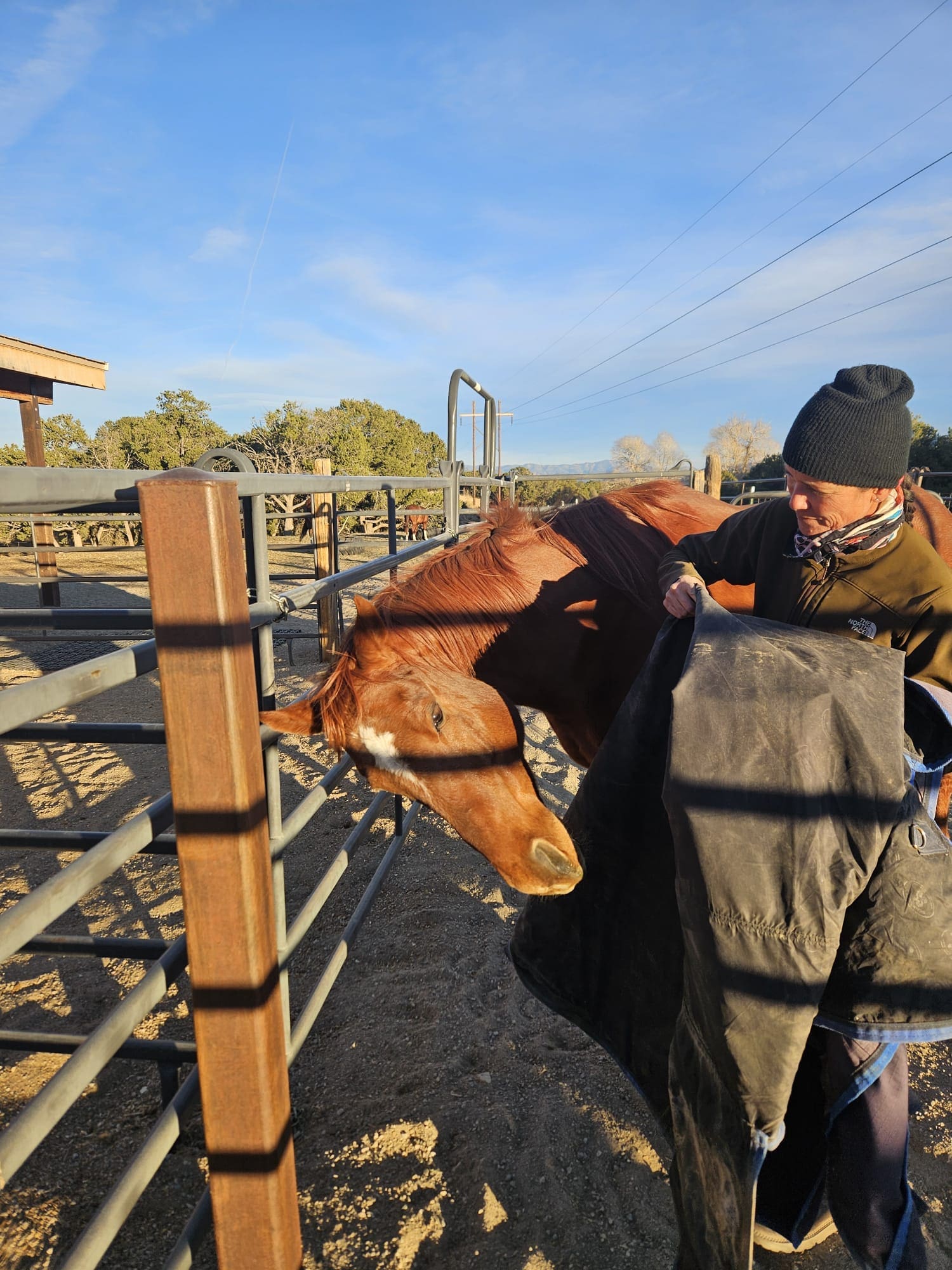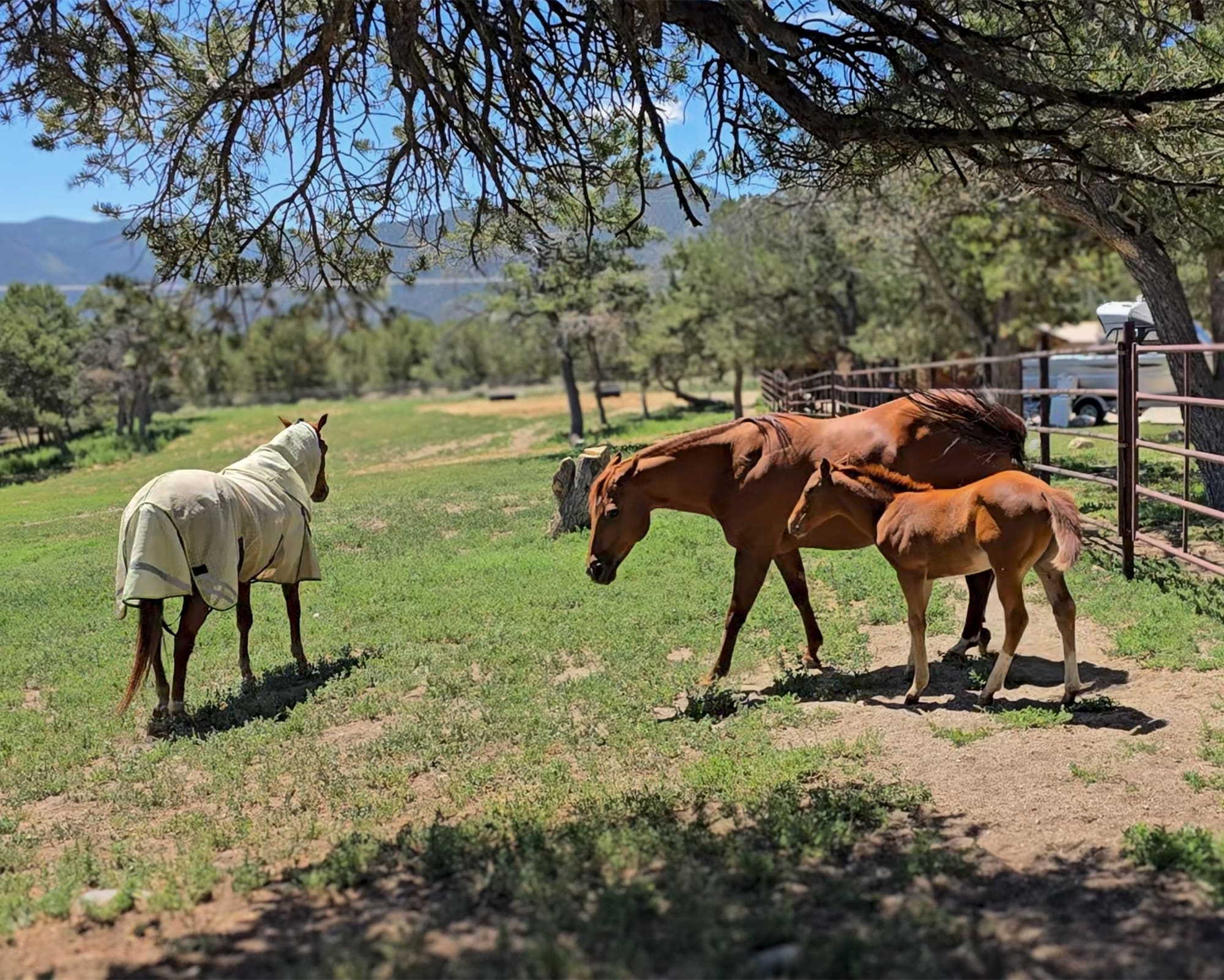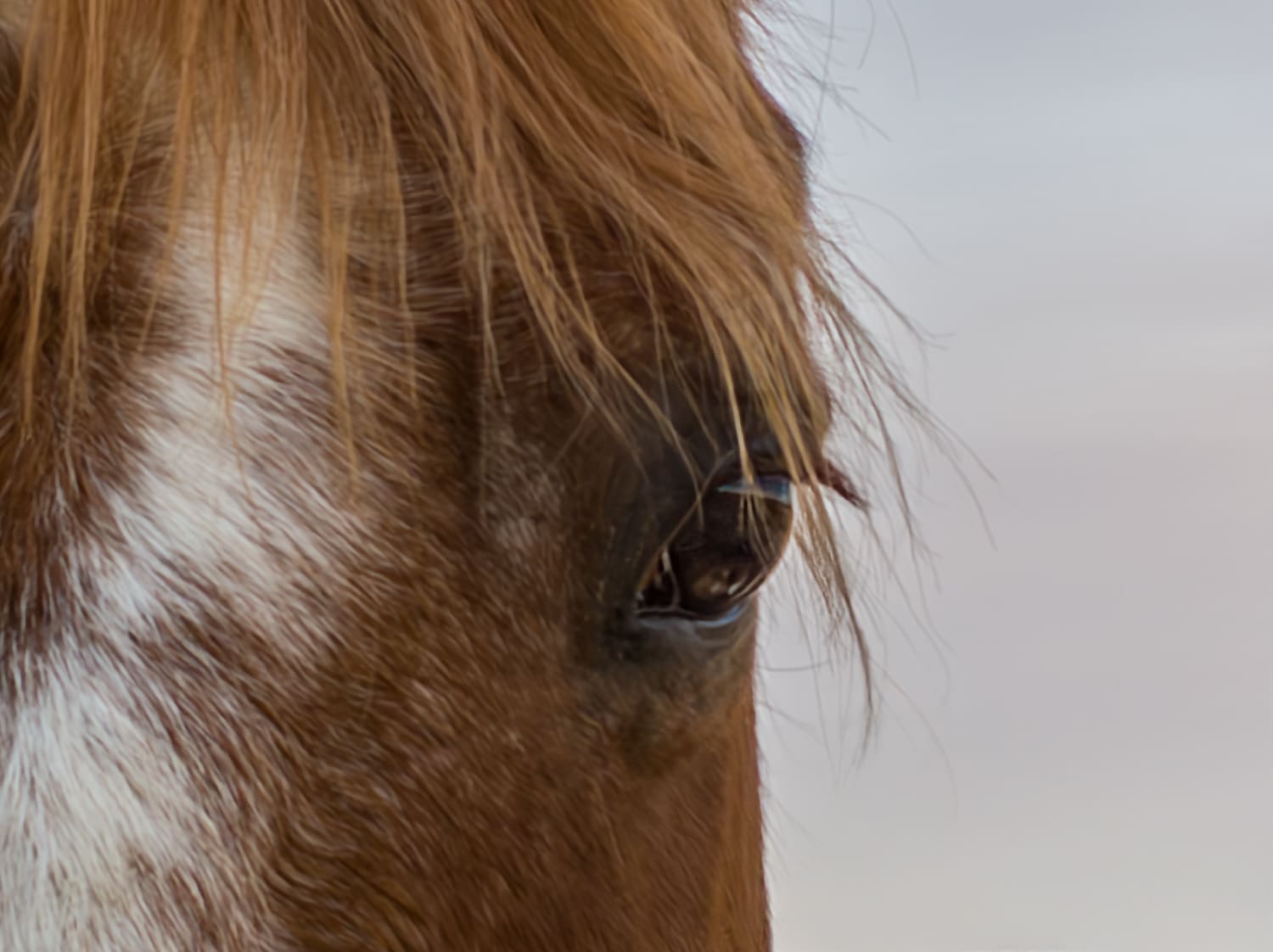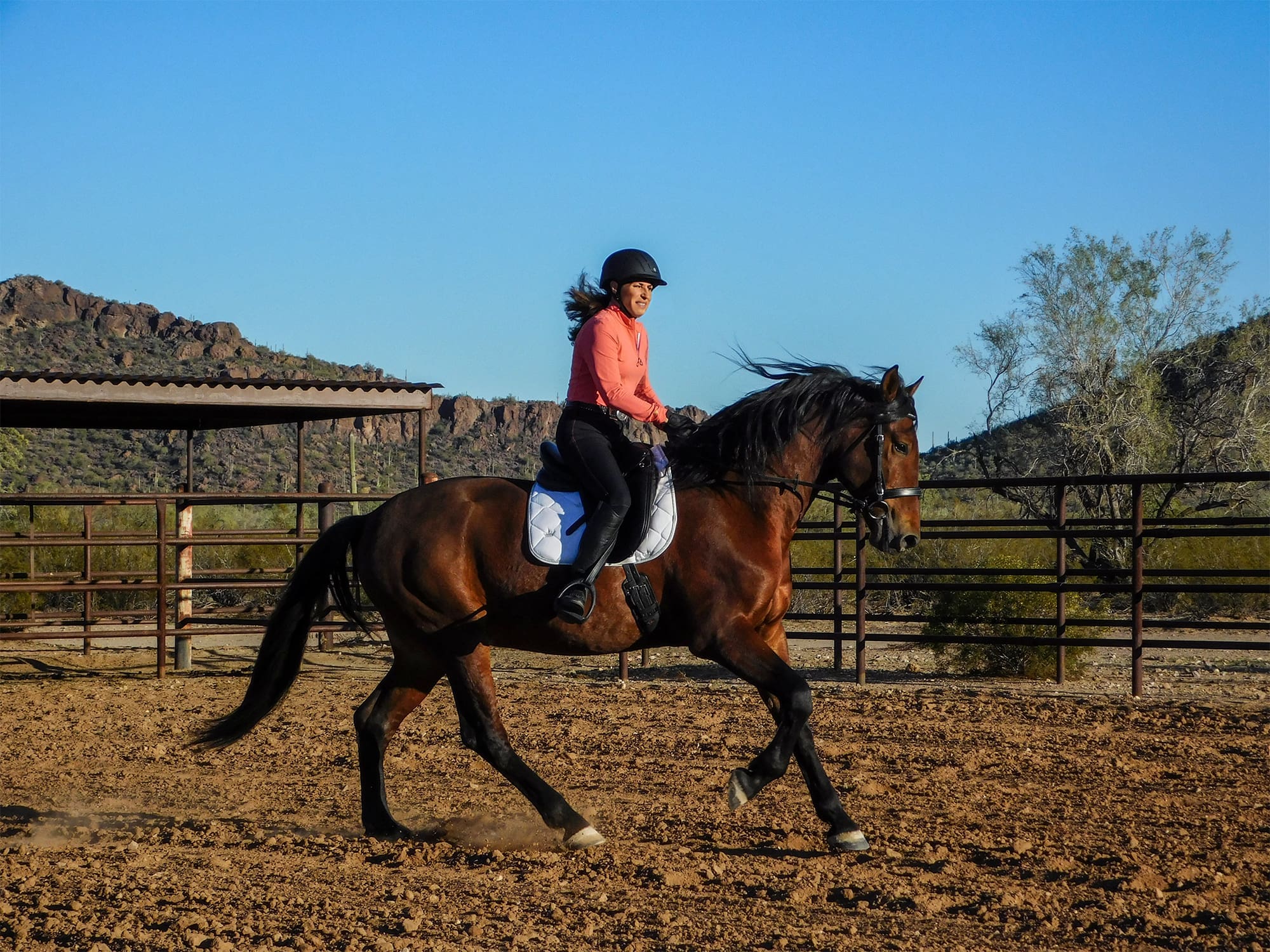Question: Dear Julie,
Six months ago I bought a 7 y/o QH gelding and he has turned out to be an awesome trail riding horse and a promising versatility ranch horse prospect. He is dark brown and very cute but over the past couple months he has developed spots of white hairs just below his withers on both sides—but worse on the left. At first there were just a few white hairs, but now the dots are about an inch around and almost solid white on the left.
When I purchased Sonny, I had a vet exam done and he passed with flying colors. The vet said he had good conformation with a short strong back. It seems like this could be a saddle fit issue but I am not sure what to do now.
Thanks for your time,
Polly
Answer: Dear Polly,
You’ve definitely got a saddle fit issue and most likely it is from “bridging,” which means there is pressure from the tree in the front of the bars and the back but not in the middle. This means there is an excessive amount of pressure at the front of the tree, at the point where you are seeing the white hairs.
These white hairs represent scarring and in time the scars may become permanent. These marks are often worse on the left because when you mount the saddle shifts and a lot of riders fail to balance the saddle after they mount, continuing the whole ride with un-even pressure from the tree on the horse’s back.
Given the relatively short amount of time the spots have been present on your horse, if you get your horse better fitted in a saddle, they’ll probably turn back to brown and you may see a reduction right away in the number of white hairs. For horses that are ridden in ill-fitted saddles for years, these marks become permanent scars, often mistaken by the novice horse-person for white markings.
Since your horse is appendix registered, it means he has some (or a lot) of Thoroughbred in him so he is probably fairly narrow and high withered, compared to a foundation-type QH, which may cause the saddle to sit down more in front. If the withers are set well back (which often comes with a short-backed, athletic horse), that would contribute to the bridging. Short-backed horses, both broad and narrow, can be really challenging when it comes to saddle fit. Other horses that may have bridging problems are older horses whose back has begun sagging and sway-backed horses of any age.
One of the easiest ways to check saddle fit is to look at the sweat marks from your saddle and pad right after a long hard ride, when your horse is fully sweated up (not just damp). If there are any dry spots under the bars of the saddle tree, which you will likely see right over the white spots, that is where there has been excessive pressure and the sweat glands have been shut down. This could be a sign of bridging or too narrow a tree or even too wide a tree that is pitching forward.
The job of the saddle tree is to distribute the weight of the rider evenly over as broad an area as possible, to protect the horse’s back. If the saddle is bridging, there could also be excessive pressure on the horse’s loins which would contribute to back soreness as well.
Actually, bridging is a big problem with my personal horse, Dually (a purebred QH but very athletically built with withers set far back), and one reason I switched to the Flex2 saddle tree made by Circle Y and worked with them to create a saddle line that has the horse and rider in mind. Because the bars of the tree flex slightly with the weight of the rider (the flex tree is not for all western disciplines–no roping from flex tree), it increases the contact in the middle of the tree and actually causes the front of the tree to flare out a little giving the horse a little more room at the shoulders. Unless you are roping, cutting or a heavier rider, the Flex2 tree may be a good option for your horse.
Another thing that has really helped my horse’s bridging problem is using a saddle with multiple rigging options. Several of the saddles in my custom designed line of saddles have rigging options (rigging refers to the D-ring that the latigos and billets are attached to). For a more thorough explanation of saddle rigging, check out this video. But the short story is that a “full-rigged” saddle has the D-ring for the cinch hanging directly below the pommel; a 7/8 rigged saddle has the D-ring a little farther back and the ¾ rigged further back yet. The farther back the rigging, the more the contact comes toward the middle of the bars of the tree. In a Flex2 tree, this really helps the bridging problem. Here are some videos helping to understand saddle rigging:
The saddle that fits my horse the best is the Monarch Arena Performance/Trail saddle. I designed this saddle to give optimal performance in the arena, but be comfortable enough for both horse and rider out on the trail and my horse and I absolutely love it.
When I am doing a lot of cutting, roping or cow work, I switch to my ranch versatility saddle, the Rocky Mountain High Performance saddle, which has a rigid high-tech tree. The other saddles in my line of 5 custom designed saddles by Circle Y are all Flex2 trees and are designed specifically for reining, trail or gaited horses. For a look at my full line of saddles, check out my website.
It is possible to pad out a saddle with a minor fit issue. In the case of bridging I’d use a special pad made for that—thin in front and back and more padded in the middle of the horse’s back (sometimes called a ‘bridge pad’ or a ‘shim pad’). But be very careful about trying to pad-out a mis-fitting saddle. In many instances, adding more padding could make the saddle fit issue worse (imagine wearing shoes that didn’t fit and were putting pressure on your foot – then adding an extra thick pair of socks). In the instance of too much pressure at the front of the tree, if you padded up the front of the saddle, it would likely put too much stress on the horse’s loins, which is also a big problem.
The best-case-scenario would be for you to have a professional saddle fitter take a look at your horse and saddle in action. I’ve been around horses my whole life and dealt with literally thousands of horses but I learn something new every time I work with a professional fitter. Unfortunately they are few and far between (and easier to find them qualified to fit English saddles than western). Many trainers and some vets are good with saddle fit too, so you may want to get a professional opinion—since diagnosing a saddle fit problem via the internet is not a sure bet! Here’s a clip of a show that we did on saddle fit, that might help, too.
Good luck and enjoy the ride!
Julie
Copyright ©Julie Goodnight 2000. All Rights Reserved. No part of this website may be reproduced without owner’s express consent.



